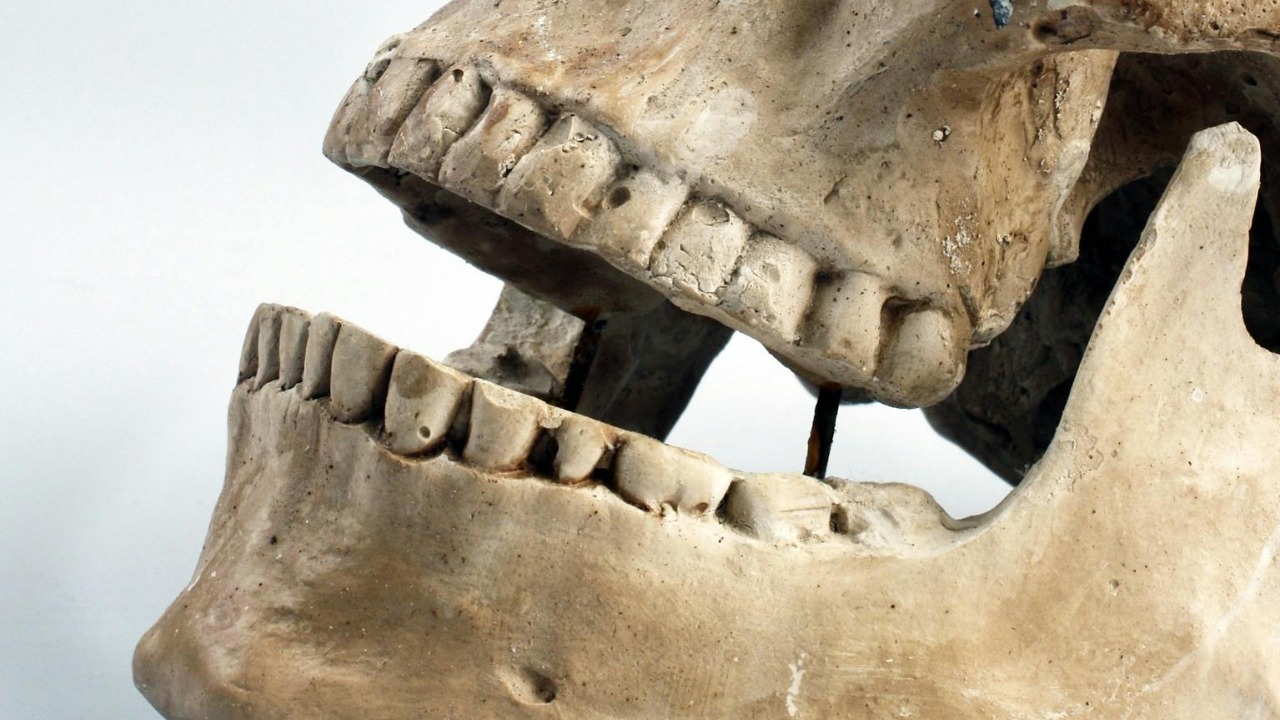
Neanderthals, our extinct relatives, were known for their notably larger jaws compared to modern humans. This distinct trait is linked to a minute variation in their DNA, which influenced facial development. A recent discovery has shed light on this tiny DNA difference, underscoring the subtle evolutionary divergences between Neanderthals and Homo sapiens.
Neanderthal Cranial Features
Neanderthal fossils reveal a prominent jaw structure, with the mandible size being significantly larger relative to the braincase proportions. This robust mandible is a testament to the Neanderthals’ adaptation to their environment and lifestyle. The larger jaws in Neanderthals are not merely a physical characteristic, but are deeply rooted in their genetic makeup.
Evidence from skeletal remains suggests that this jaw adaptation supported a diet of tough, raw foods. The larger jaw and stronger muscles provided the necessary force to chew and digest these foods, which were a staple in the Neanderthal diet. This dietary requirement and the corresponding jaw adaptation highlight the intricate relationship between genetics and environment in shaping species evolution.
Modern Human Facial Evolution
Contrasting the Neanderthals, Homo sapiens exhibit a reduction in jaw size, which correlates with changes in diet and tool use. The advent of cooking and the development of tools for processing food led to a softer diet, reducing the need for a large, robust jaw. Fossil metrics reveal a stark difference in the average mandibular dimensions between Neanderthals and contemporary humans.
The smaller human jaws reflect adaptations to cooked foods and softer diets. This shift in dietary habits, coupled with the use of tools, has significantly influenced the evolution of human facial features, leading to a more refined jaw structure compared to our Neanderthal ancestors.
The Genetic Basis of Jaw Development
Specific genes play a crucial role in regulating bone growth during embryonic stages, shaping the craniofacial morphology across hominin species. Regulatory DNA sequences control these genes, influencing the development of facial features, including the jaw.
The concept of a “tiny difference in DNA” refers to a key regulatory variant that can significantly influence physical traits. In the case of Neanderthals, this tiny difference is responsible for their larger jaws, highlighting the profound impact of minute genetic variations on species evolution.
Identifying the DNA Variant
Genomic sequencing techniques have been instrumental in comparing Neanderthal and human DNA samples. These techniques have enabled scientists to pinpoint a single nucleotide polymorphism responsible for jaw enlargement in Neanderthals. This discovery, made in 2025, has significantly advanced our understanding of the genetic basis of craniofacial development.
The identification of this DNA variant has not only shed light on the genetic underpinnings of Neanderthal jaw size but also opened up new avenues for exploring the genetic basis of other physical traits in hominin evolution.
Implications for Evolutionary Divergence
The DNA difference that led to larger jaws in Neanderthals contributed to their survival in harsh Ice Age environments. The robust mandible facilitated the consumption of tough, raw foods, which were abundant during this period. This adaptation was crucial for Neanderthals to thrive in their environment.
Larger jaws also had potential health impacts, such as distinct dental wear patterns. Furthermore, evidence of interbreeding between Neanderthals and Homo sapiens suggests that this variant may have influenced hybrid populations, contributing to the genetic diversity of early human populations.
Broader Applications in Paleoanthropology
Understanding this genetic trait has refined models of hominin migration and adaptation. It provides insights into the evolutionary pressures that shaped the physical characteristics of different hominin species, including Neanderthals and Homo sapiens.
Future research directions include CRISPR studies to investigate the effects of this variant, which could provide deeper insights into the role of genetics in craniofacial development. This finding also contributes to ongoing debates about Neanderthal extinction factors, offering a fresh perspective on the complex interplay between genetics, environment, and species survival.
More from MorningOverview